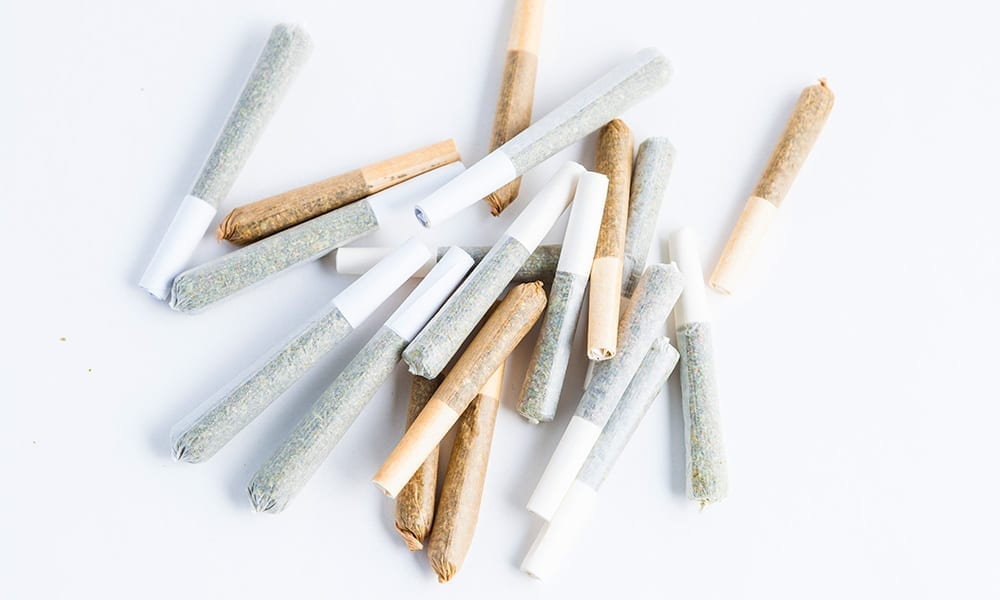Culture, Educational
Come On, How High Can a Person Really Get?
By
Toss a couple of cannabis growers into a room together and they’ll go at each other like wild, rabid dogs, marking their territory every step of the way. Perhaps it’s pride, a twinge of insecurity or pure unadulterated ego, but anyone with a passion for growing weed has the unwavering attitude that their creation, their strain, their breed of stoned delights is vastly superior to any other version of the plant ever produced. It can be a rather humorous display to watch two seemingly adult humans arguing over specs like, “My plant produces better yields… mine will get you higher,” and all sorts of other puffed up, brolicious sass gab.
It’s the potency factor that really gets some of the more uptight growers taking trash. As you read this article from the comforts of your home, just know that we are watching you. No, not really. Just know that a gang of deranged cultivators is out there right now trying to devise some of the most powerful, knock you in the dirt strains known to humankind. The goal of this gnarly cultivation crusade, or so it seems, is to unleash a species of weed upon the planet that mimics the savage blast of a sledgehammer to the face. These radicals, my dear friends, are the mad science forces dedicated to Getting America Stoned Again.
All of this focus lately on the potency of weed begs the question: Is it necessary to create stronger strains to drag the cannabis culture into the modern age? Seriously, how high do we need to be? After all, humans have been getting stoned for thousands of years on moderately okey dokey, no-frills bud, never once complaining (at least as far as we know) that the weed they were smoking didn’t catapult them into some feral dimension of space and time where the kitchen appliances speak in tongues. Yet, cannabis consumers today are driven by marijuana that registers a THC content of 25 percent and over. The more, the better. These people are the dedicated potronauts of stoned society who need to trip out at a near dysfunction to feel like they got their money’s worth. They, of course, are some same hotshot binge tokers who end up on a full-fledged freak out after a fiendish canna-panic sets in.
Although we have limited knowledge regarding the science behind the elusive pot buzz, most experts agree that susceptibility to the potency of some strains is really more about the person’s tolerance than the purported THC-levels. The idea is that the more marijuana a person consumes on a regular basis, the less likely he or she is to be slashed to bits by some mega-strain referred to as The Kevorkian packing a THC punch of 99.99 percent. But for the weekend weed warrior, it’s a different story altogether. These folks should prepare to watch their faces melt off in the streets. “It’s really dependent on the history of use in that individual,” Richard Miller, a professor of pharmacology at Northwestern University’s Feinberg School of Medicine, told Mashable.
There is some basic science behind to getting high. Since every person is equipped with an endocannabinoid system, our brains have receptors that allow tetrahydrocannabinol (THC) to cling them and produce buzzed effects. But the more these receptors are used, the less effective they become in generating a high.
“They tend to work a little better or worse depending on how much they’re used,” Miller said. “If you flood them [receptors] with lots and lots of cannabis there might be a tendency for them to work less well.”
If tolerance is the determining factor for how strong a person’s buzz is going to be, some of the high potency strains are sort of wasted on regular users. But that’s okay, no need to change up your buying habits or anything. Some studies have suggested that it doesn’t matter how much THC is contained in a particular strain, all of them are relatively the same. Researchers at the University of British Columbia say the differences in the buzz that each strain produces is associated with varying levels of other non-intoxicating cannabinoids. “A high abundance compound in a plant, such as THC or CBD, isn’t necessarily responsible for the unique medicinal effects of certain strains,” said lead study author Elizabeth Mudge in an interview with Science Magazine.
There is more to creating a strain of marijuana than churning out massive THC levels. Most experienced cannabis growers understand the importance of the “entourage effect” – cannabinoids, terpenes, flavonoids – all working together to provide the user with a unique buzz and are not just obsessing over THC levels. But the consumer is. Some reports show that some growers are being forced to produce more high potency strains because less potent products aren’t selling. Consumers in legal states like Alaska are all about the strong stuff (anything over 20 percent) rather than average strains testing at 14 percent. But this is happening everywhere. Some of America’s favorite strains (Blue Dream, GG#4, Durban Poison) contain at least 20 percent THC. This is where it necessary for budtenders (and the cannabis media) to educate.
So, how high can a person really get? Pretty high. But this has less to do with THC levels than most are programed to think.
TELL US, do you buy cannabis based on its THC levels?
Read more from the source: CannabisNow.com
Photo Gracie Malley for Cannabis Now


